Exhibition Review: Genetic Automata
By Dr Georgia Walton, published 19th January 2024
A major exhibition of collaborative video works, Genetic Automata, draws on the aesthetics of iconic videogames to raise important questions about the role that science and genetics have played in shaping perceptions of race and identity. Georgia Walton visited the Wellcome Collection to find out more.
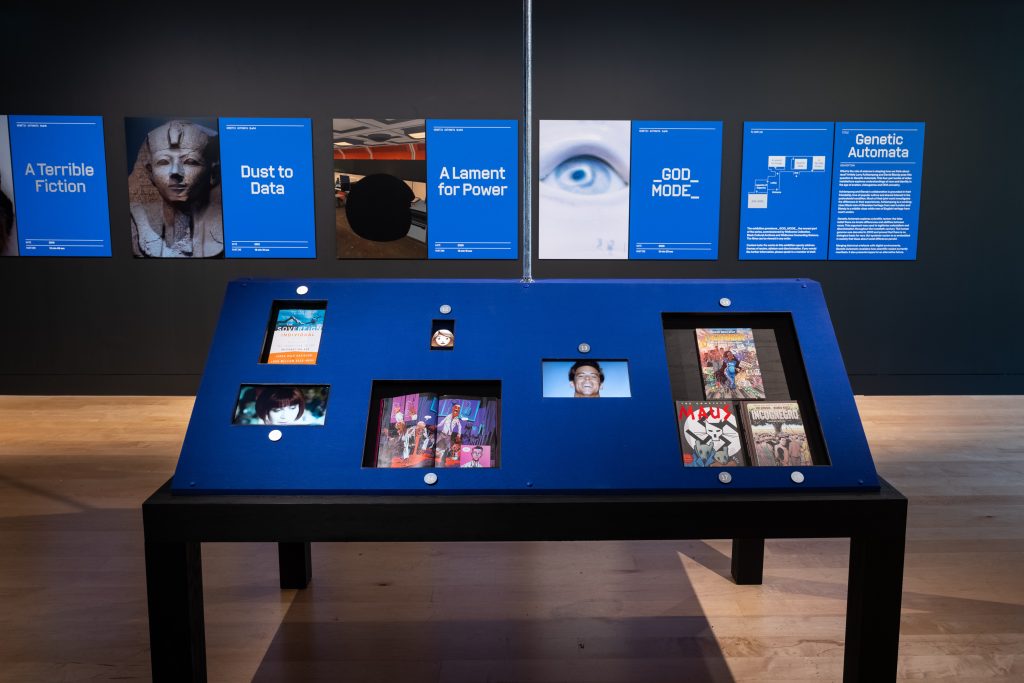
Genetic Automata is a series of four video works created by the artistic partnership of Larry Achiampong and David Blandy. Emerging from the artists’ shared interest in popular culture, videogames and the ‘postcolonial condition’ the videos in Genetic Automata interrogate embedded racial narratives in the history of science and explore the ways in which these shape contemporary experience.
Arranged in reverse chronological order, the videos are each shown in separate rooms and focus on a variety of canonised and forgotten figures from scientific and intellectual history such as John Edmonstone, a Black taxidermist who taught Charles Darwin his skills, the American sociologist and Civil Rights leader W. E. B. DuBois, and Henrietta Lacks, a cancer patient whose cells were the basis of medical research that led to the development of numerous vaccines and treatments.

To tell stories of these individuals, Achiampong and Blandy draw on the aesthetics and experience of playing iconic videogames such as the Resident Evil series and Metal Gear Solid. The basis of all the work is their shared enthusiasm for gaming but also the radical difference in the ways in which their identities in the real world are confronted in gameplay. In a video interview in the exhibition Achiampong is described as a working-class Black man, and Blandy as a middle-class White man. These identities shape their experiences of playing games and other virtual interactions such as emoji selection.
In such virtual environments, racial and other characteristics are represented through a drop-down menu users can select from. At the same time, default protagonists in videogames are often White, with fewer or no options for other racial identities. And the default yellow emoji option is usually understood to be an analogue for Whiteness. Throughout all the videos in the exhibition, Achiampong and Blandy ask how these micro-decisions in the virtual realm confront and structure engagement with real-world identities. They show how we are constantly marshalling our identities into pre-determined categories, and that some of these categories have more options and agency than others.
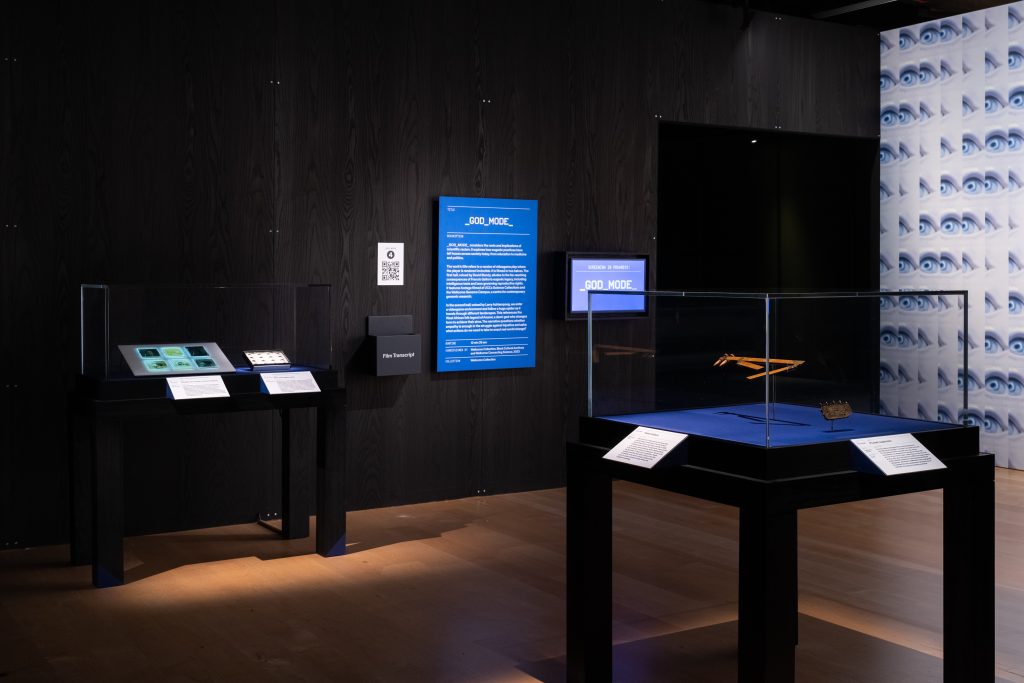
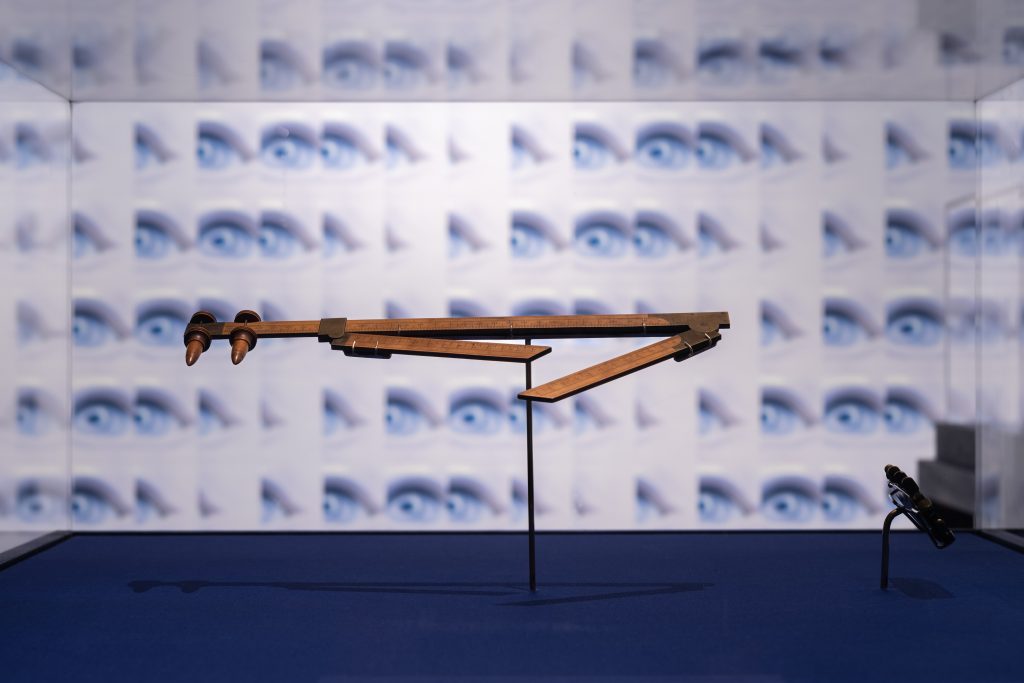
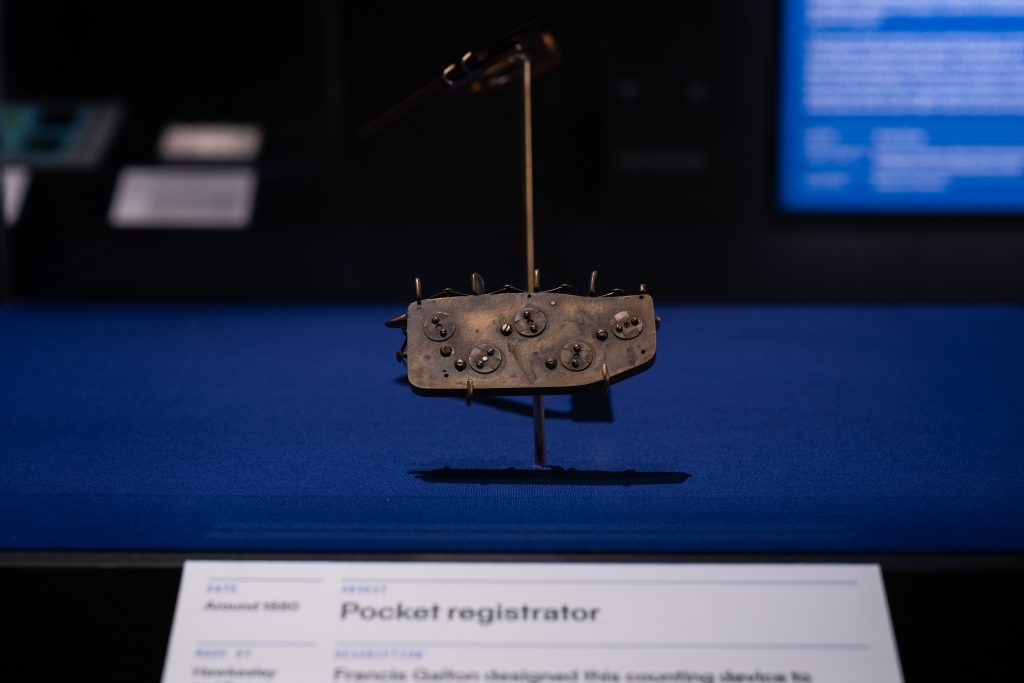

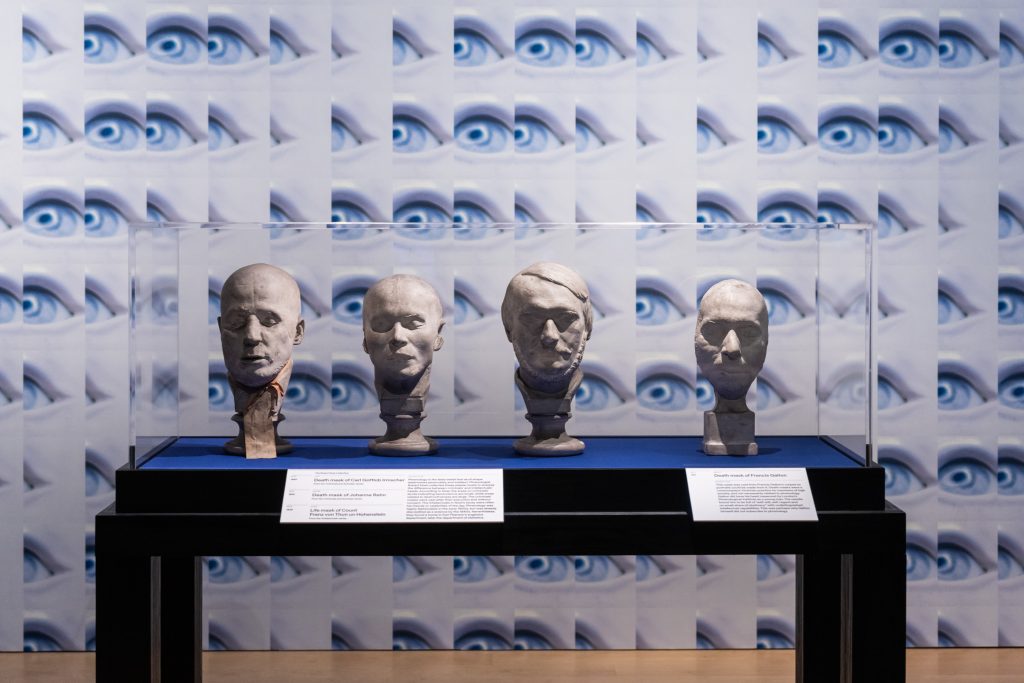
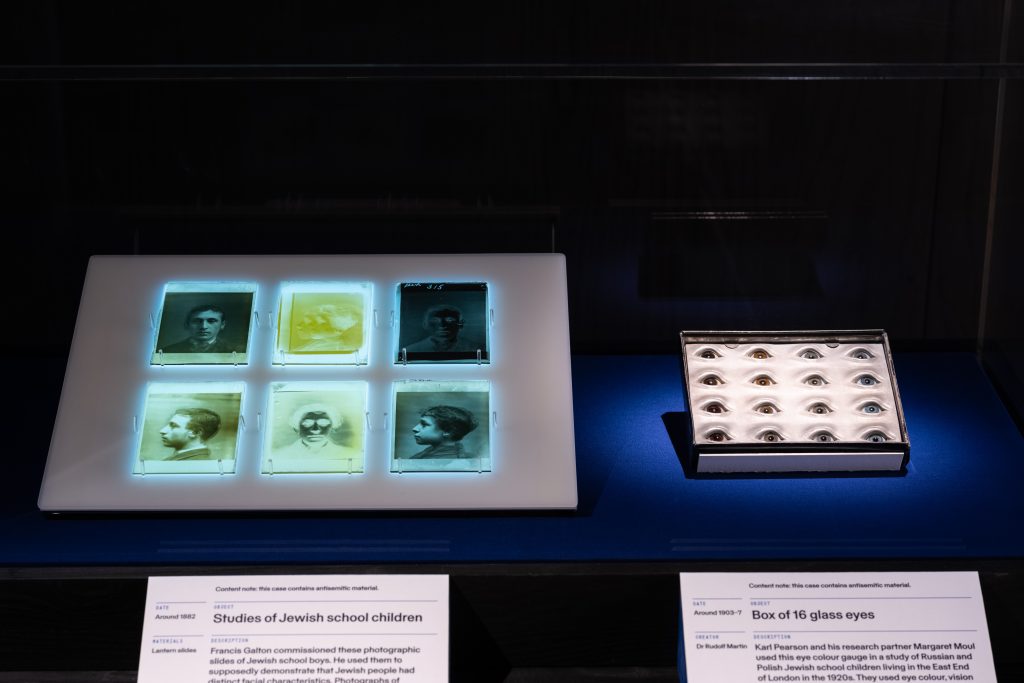
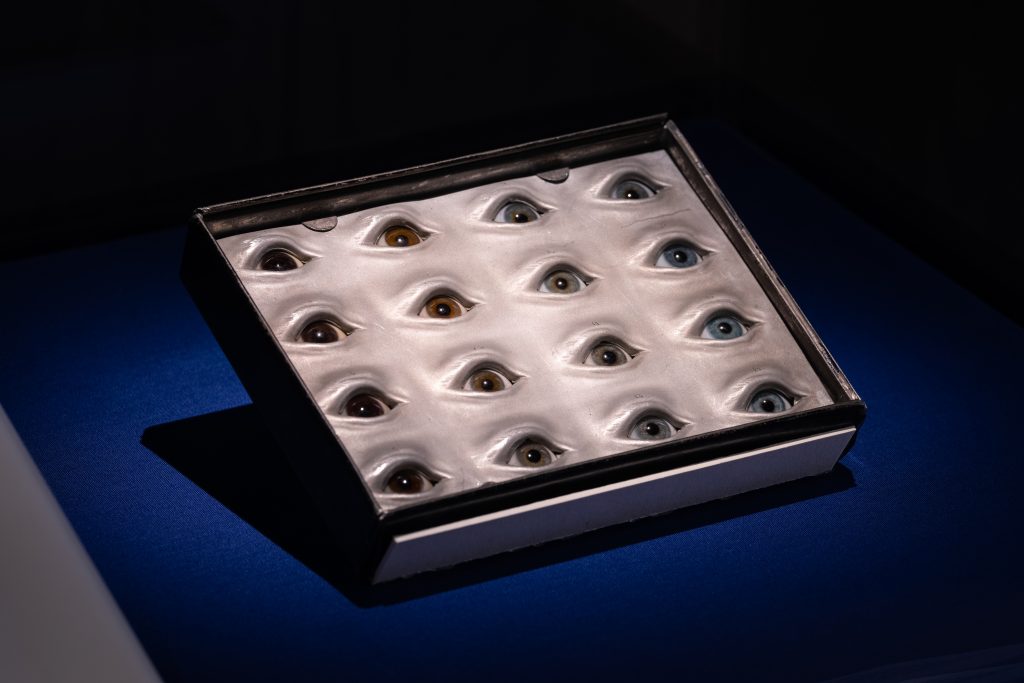
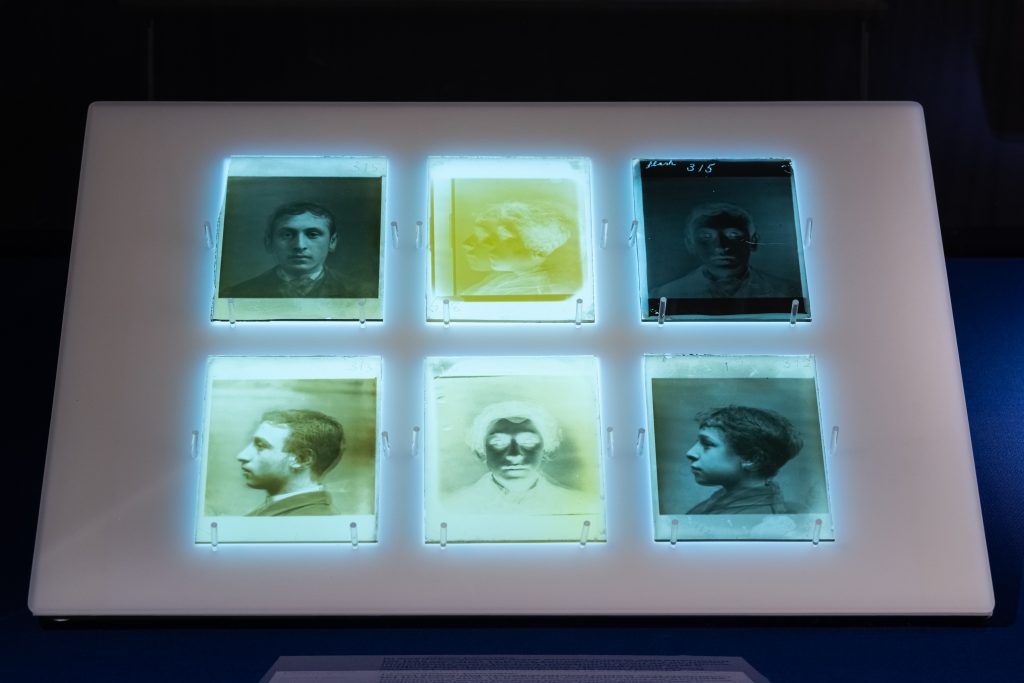

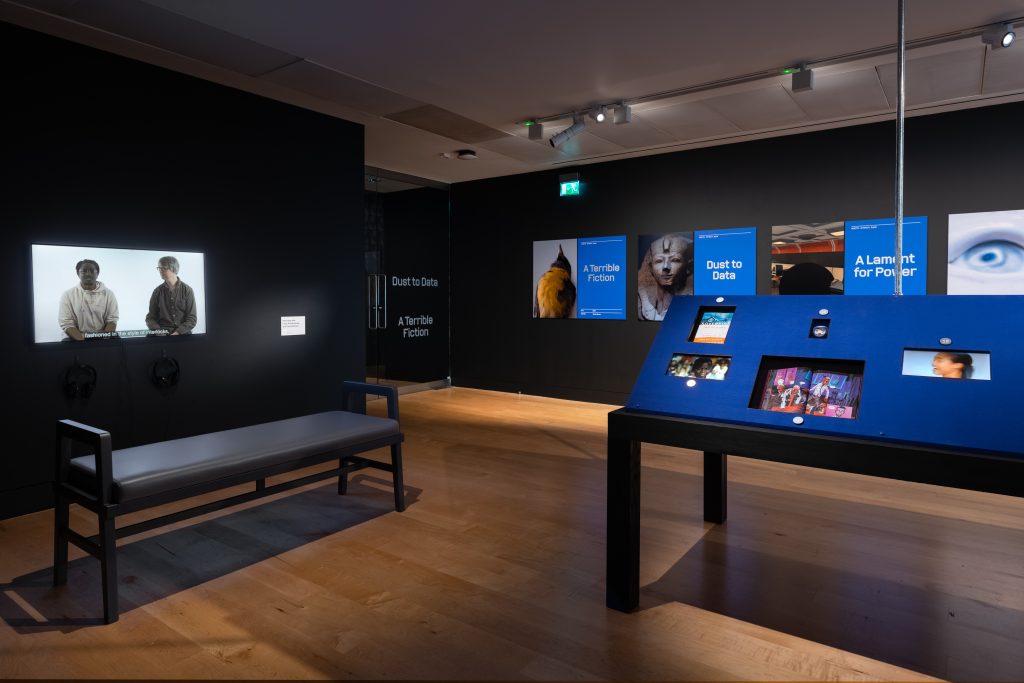
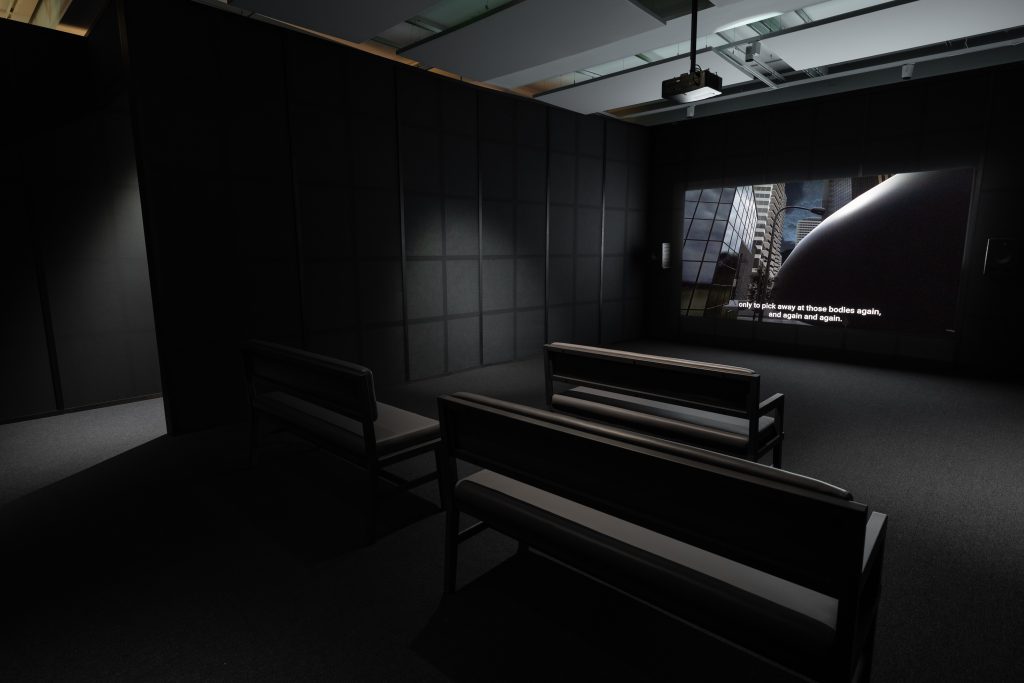

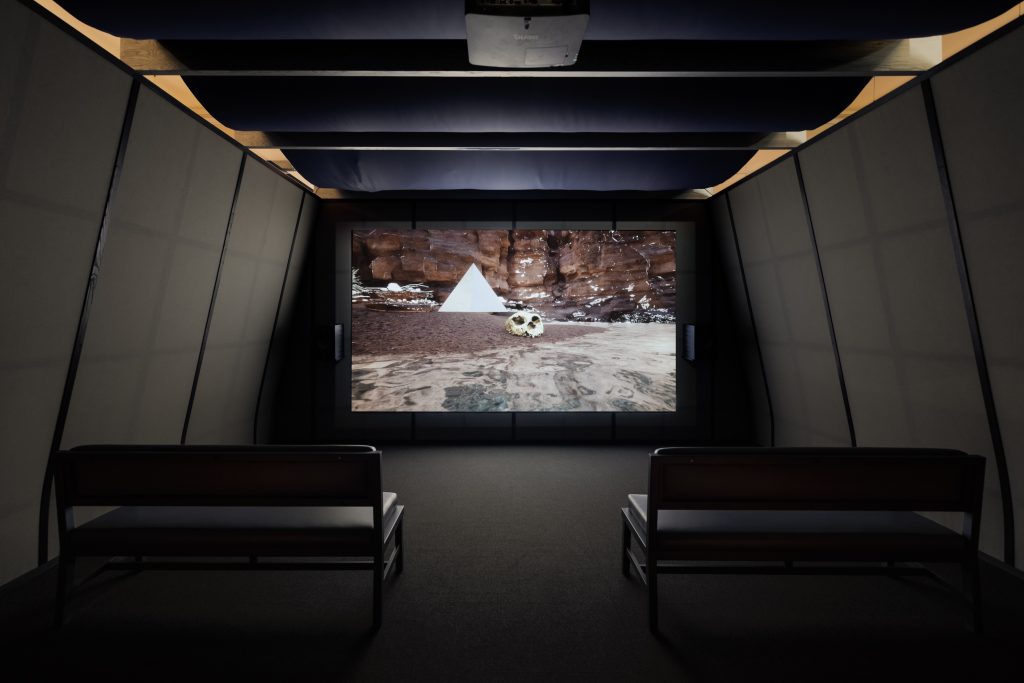
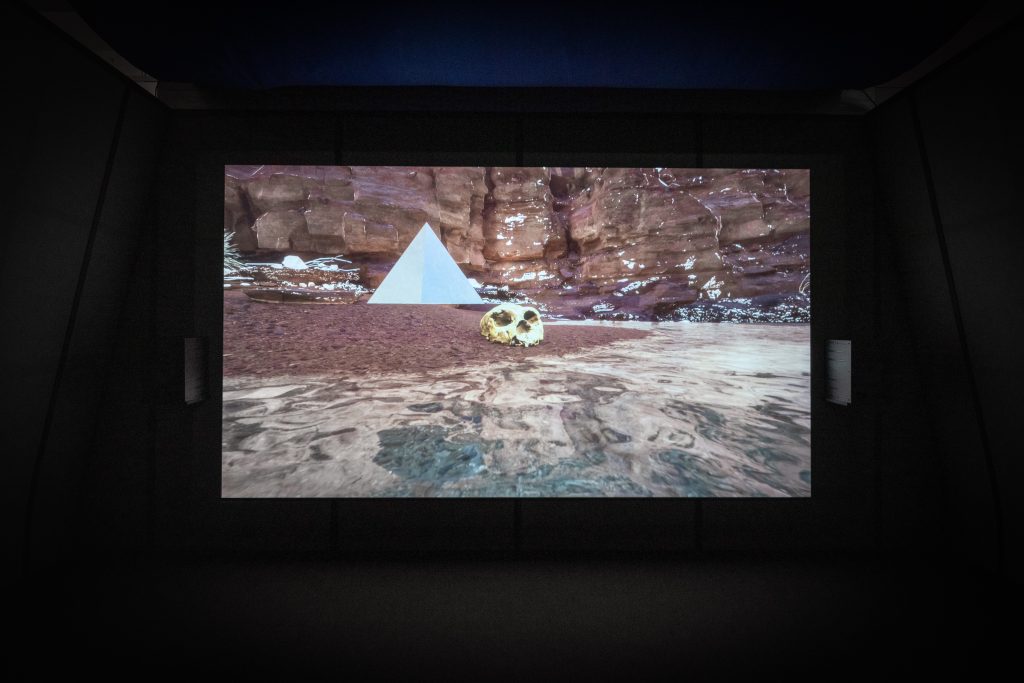
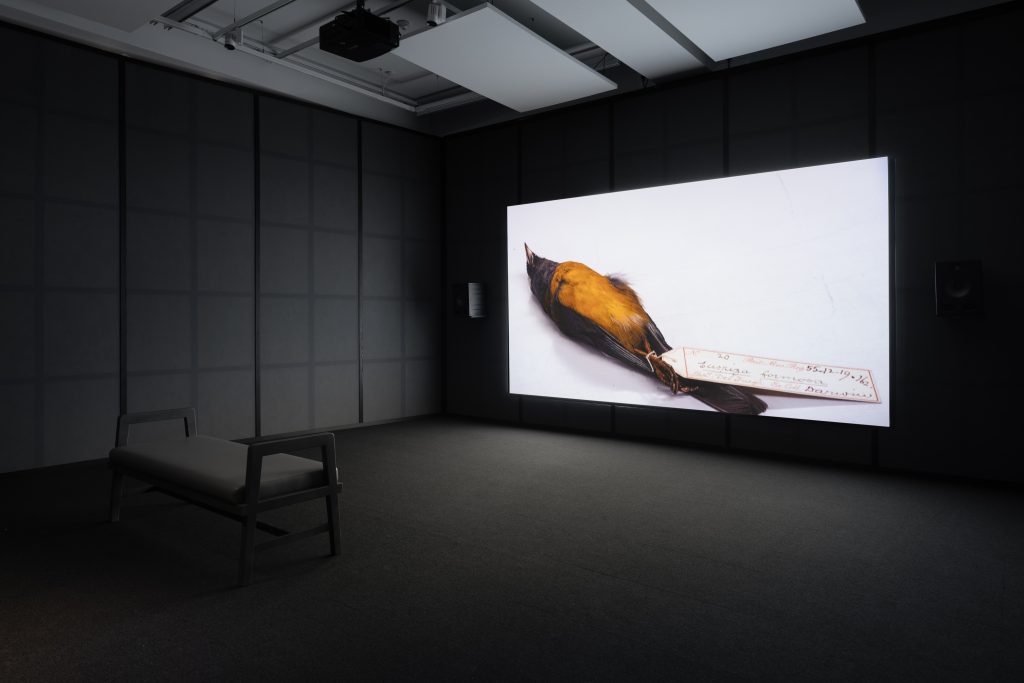

Genetic Automata, installation images, Wellcome Collection, 2023. Photography: Steve Pocock.
Other Posts
- “The genetics bomb could be a disaster”: Author Simon Mawer on Mendel’s Dwarf
- Spotlight on CRISPR-Cas9
- A Look Back at 2023
- Explainer: Human Stem Cell Based Embryo Models
- Is it time to revisit the 14-day rule?
- Gifting the Womb: The UK’s First Uterus Transplantation
- Discipline Hopping: UK Law and Emerging Reproductive Technologies
- Reflections: A Look Back at the First Year of the Project
- Book Review – Eve: The Disobedient Future of Birth
- Ectogenesis: A Retrospective
‘A Lament for Power’
The most memorable video of the four is ‘A Lament for Power’, which is narrated from the viewpoint of Henrietta Lacks, a Black woman whose cells were taken without her knowledge or consent. The research that followed, enabled by her genetic information, led to the development of vaccines and treatments for Polio, HPV, HIV, Zika and mumps, as well as research into cancer and genetic disorders. Her cells were taken without her knowledge, their life extended long past her own.
Referencing the videogame Resident Evil 5 (2009), which at the time of its release was criticised for its depiction of a White protagonist who kills hordes of Black zombie-like characters, the video explores Lacks’ loss of agency. Achiampong and Blandy reflect on the relationship between the White protagonist and Black non-player characters who are destined to repeat actions with no control, there merely as cannon fodder, to advance the plot and the development of the main character.

Mimicking the post-apocalyptic scenes of Resident Evil, ‘A Lament for Power’ moves through a series of abandoned environments, a dilapidated shed, cityscapes and sci-fi interiors. In each space, a black orb swells uncontrollably. Over these images, a voiceover speaks:
“You can feel your body, seeping through the world. Growing in labs, spliced injected and infected for the good of mankind. Your body. Swollen to gargantuan form, pulsing, mutating and splitting again and again and again as others’ hands manipulate and inspect you, mere cells on a petri dish. Prone. Powerless to end this zombie life, of your flesh living way past your soul, laid in an unmarked grave, cultures excised, stolen and labelled, shared around the world to be marvelled at in their gross monstrosity.”
Achiampong and Blandy imagine Lacks’ cells as monstrous, doomed to a zombie-like existence. In doing so they raise questions of bodily autonomy beyond the confines of the body itself: Do we have the right to manipulate the genes of another? When do cells cease to belong to one person and become the property of someone else? They represent this elongated physical life as fundamentally dehumanising, the ultimate loss of agency.
Some may say that Lacks’ cells enabled research that has saved countless other lives and that ultimately the bypassing of her consent was for the greater good. Indeed, some may question whether we can be said to own our cells at all. However, in their video Achiampong and Blandy draw attention to who is asked to sacrifice their autonomy for the greater good, comparing this with those who generate capital and gain status because of scientific research. They give Lacks a voice, allowing her to break free from her ‘zombie life’ and occupy a subject position rather than being confined to the role of a non-player character. ‘A Lament for Power’ is both haunting in its representation of loss of agency and polemical in its critique of racial power structures.
Eugenics in science and culture
The video exhibits are contextualised by various cultural artefacts on display in the adjoining rooms. These include Frantz Fanon’s Black Skin, White Masks (1952), Art Spiegelman’s graphic novel Maus (1986), and the video for Michael Jackson’s ‘Black or White’ (1991). All these texts consider the ways in which racial identity is constructed and socially produced. Other texts in the display are Octavia E. Butler’s novel The Parable of the Sower (1993), Metal Gear Solid V (2016) and the 2017 game for Nintendo Switch, Hollow Night, which each imagine post-apocalyptic futures after various environmental and biological catastrophes. Together these texts set the stage for a series of works dealing with the ways in which our navigation of the present and our vision of the future are predicated around certain narratives and ideas.
Also on display are artefacts from the Galton Collection. Francis Galton was the Victorian originator of eugenics, which he described in 1883 as ‘the science of improving stock’: the idea that the genetic quality of the human race could be enhanced by encouraging those with ‘desirable’ characteristics to reproduce. Historically, eugenics has been used by those committing atrocities as a justification for racial cleansing and its doctrines were adopted by the Nazis to rationalise their persecution of Jews and other minority groups. The ‘science’ of eugenics is now widely discredited but recent advances in biotechnologies, such as genome editing, have reignited the ethical debate about what constitutes a ‘eugenic’ practice.
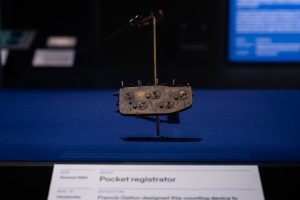
Included in the exhibition are items Galton used to categorise individuals such as a box of glass eyes, head calipers, a ‘pocket registrator’ (a device used to rate the attractiveness of women), and headshots of Jewish schoolchildren. In addition to these objects there is also Galton’s death mask. This latter object allows us to turn our gaze on Galton as he did on others. However, it also humanises him, allows us to situate his ideas historically and personally and in doing so afford them less weight. It also has the effect of reframing Galton’s ideas so we can see them as the personal project of an individual, rather than as the sanctified assertions of science. The pocket registrator, for example, typifies the subjective viewpoint of the scientist who transforms his own aesthetic judgements into scientific fact.
These items from the Galton Collection situate the more recent cultural artefacts in a long history of ideas, showing how pervasive narratives about race and identity are rooted in nineteenth-century science. They are also vital to understanding Achiampong and Blandy’s work, which exposes and critiques the ways in which knowledge is produced and judged as valuable. The videos ‘Dust to Data’ and ‘God Mode’ depict places that we revere as sites of knowledge creation such as museums and libraries. Furthermore, the exhibition title suggests that we are programmed to think in certain ways about genetics, that, though we may be under the impression that we think and act independently, our beliefs and knowledge are rooted in this scientific and intellectual history and continue to be shaped by restrictive categories in the present.
The exhibition as a whole destabilises the notion of scientific knowledge, showing it to be fallible and sometimes rooted in prejudice. It also uncovers hidden stories about those who were central to knowledge advancement, but were unrecognised or unable to act themselves.
The issues of agency and value, raised by the exhibition, will become even more pressing as future genetic and reproductive technologies continue to push the boundaries of what is scientifically possible. Achiampong and Blandy offer no clear solutions. However, they do suggest that human experience must be at the heart of the way we engage with these issues.
Genetic Automata is on at the Wellcome Collection until 11th February 2024.
